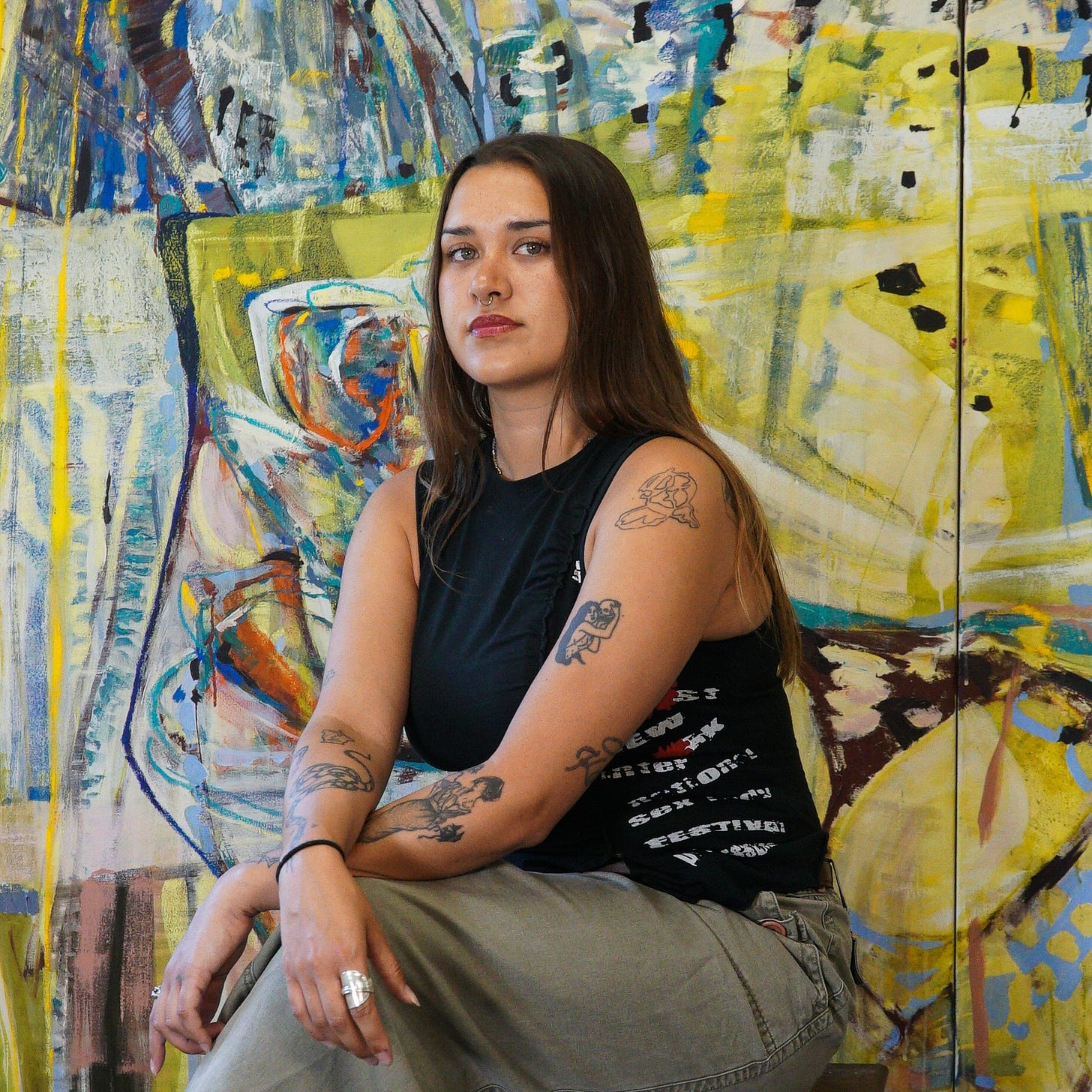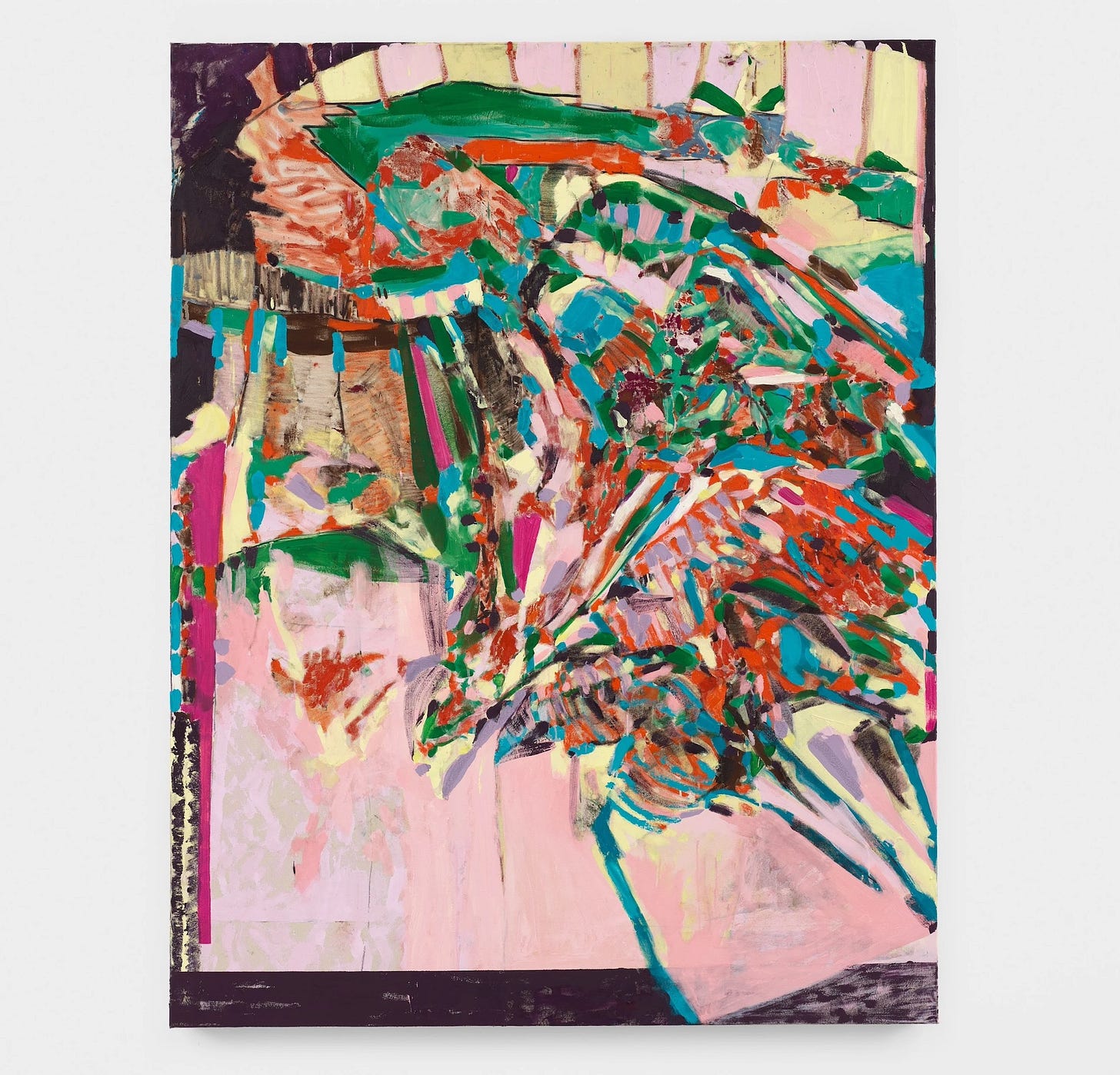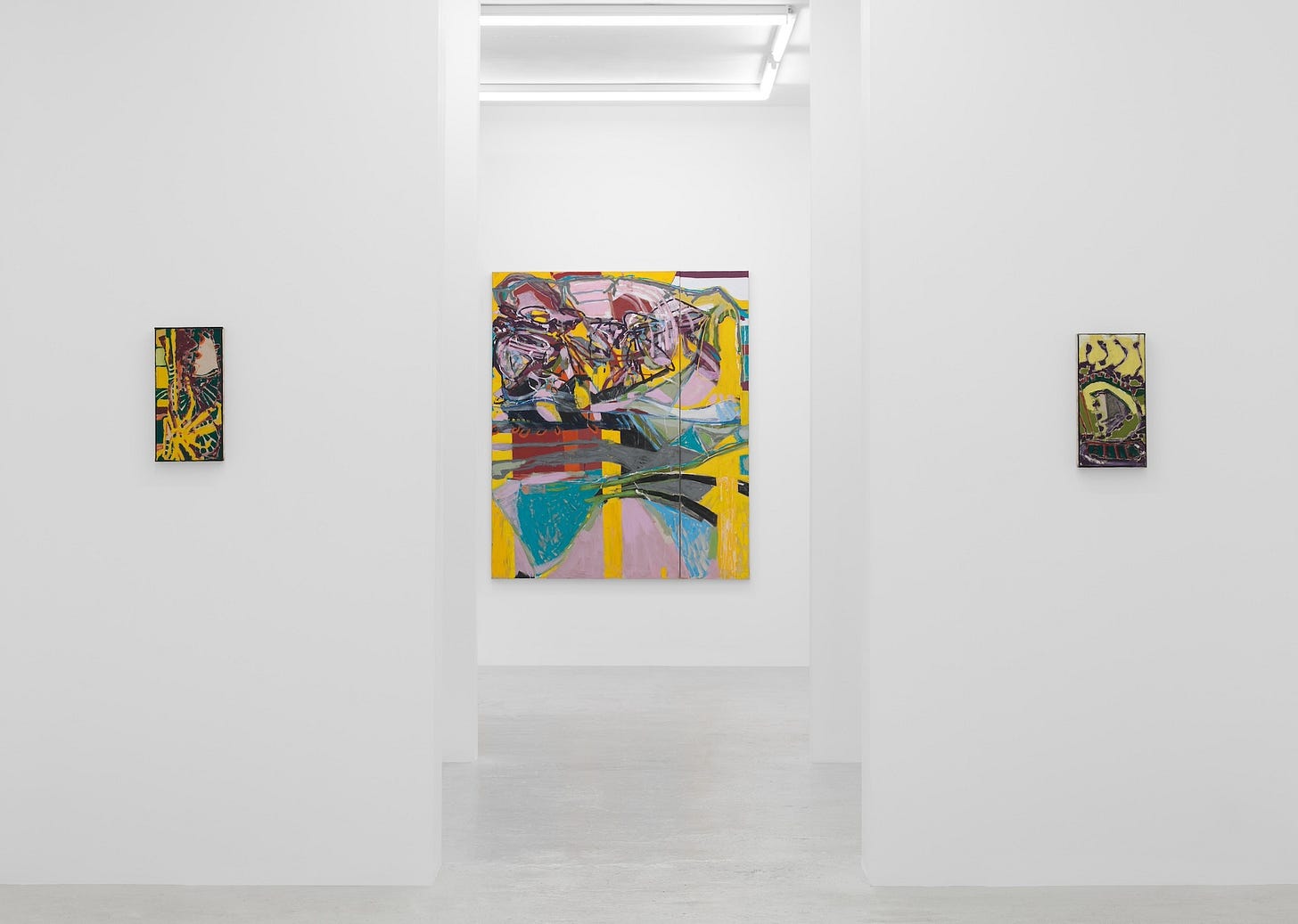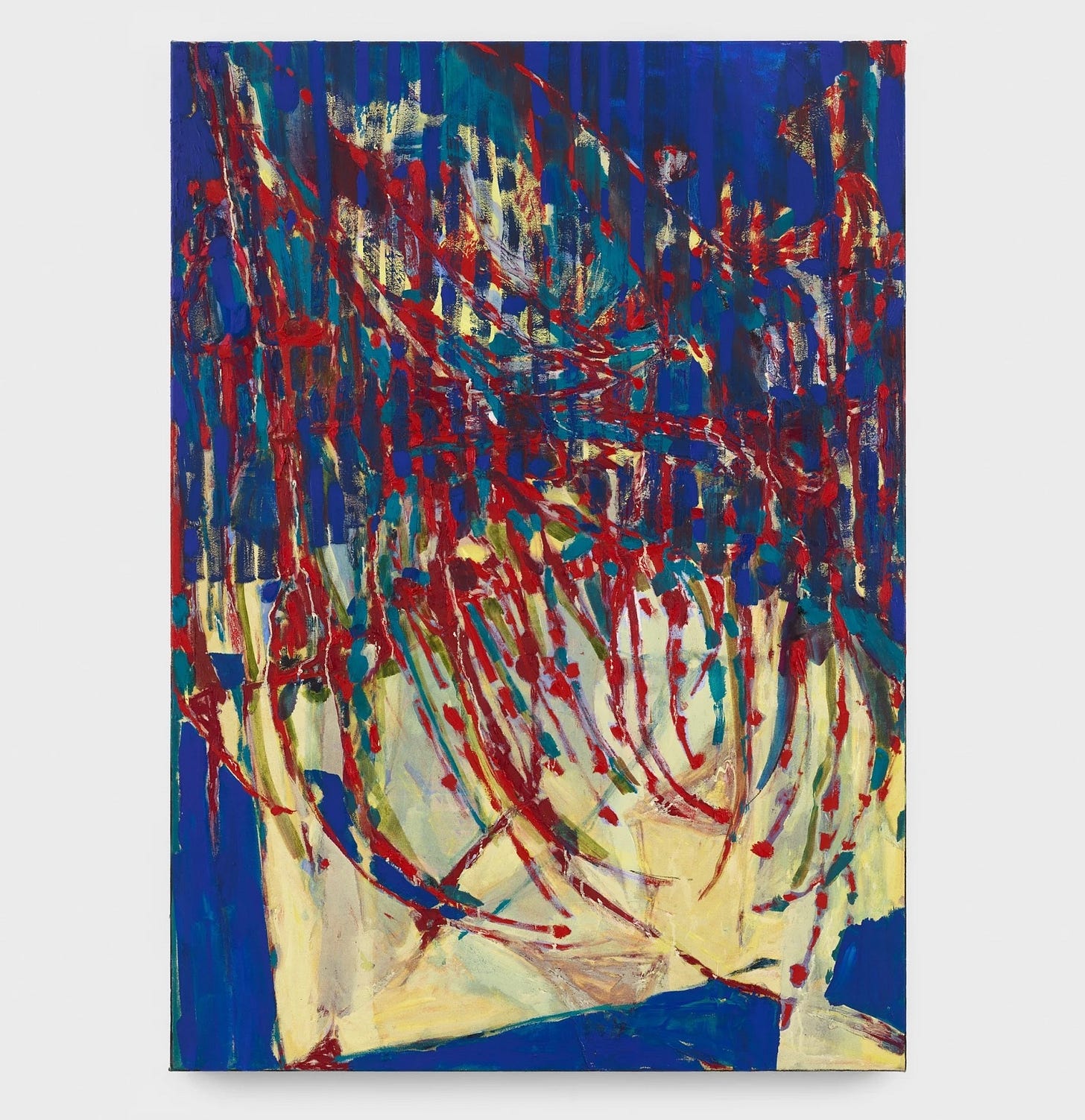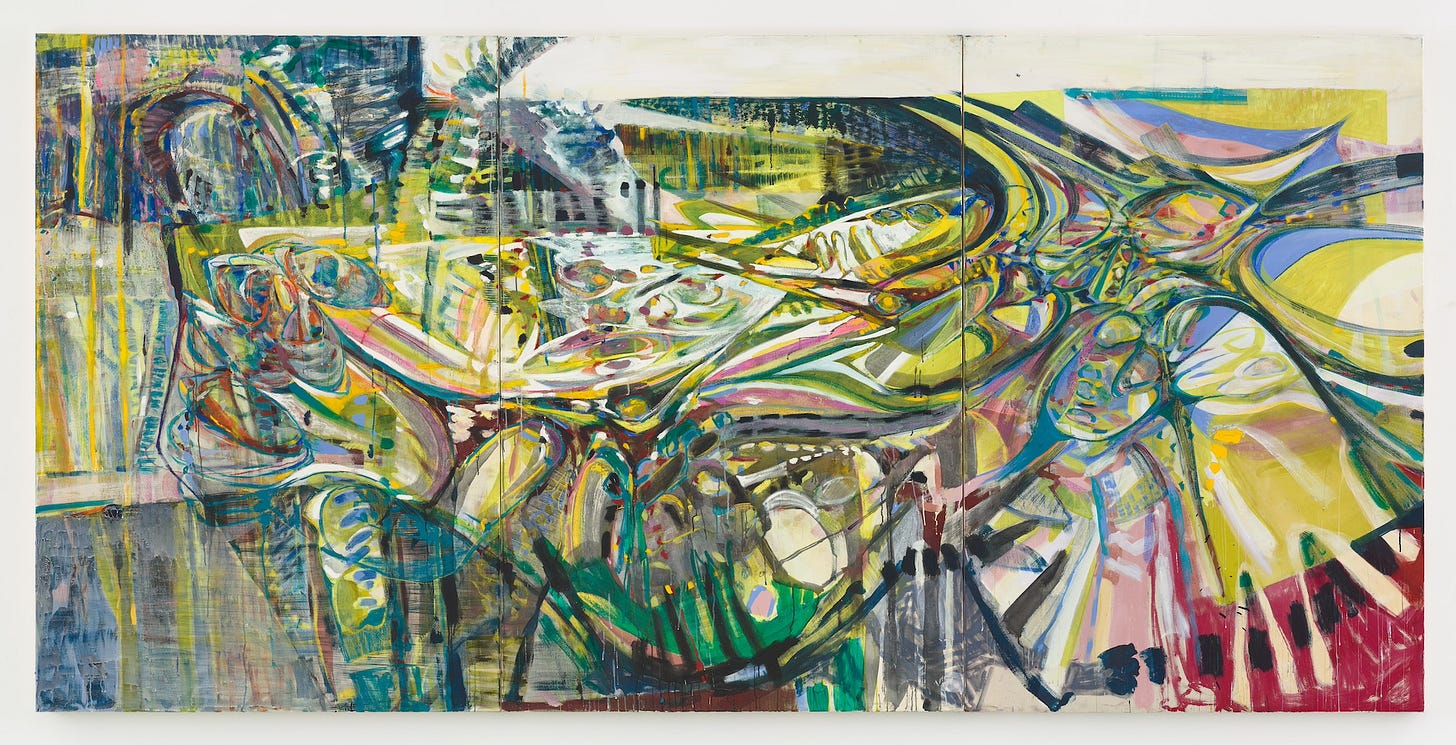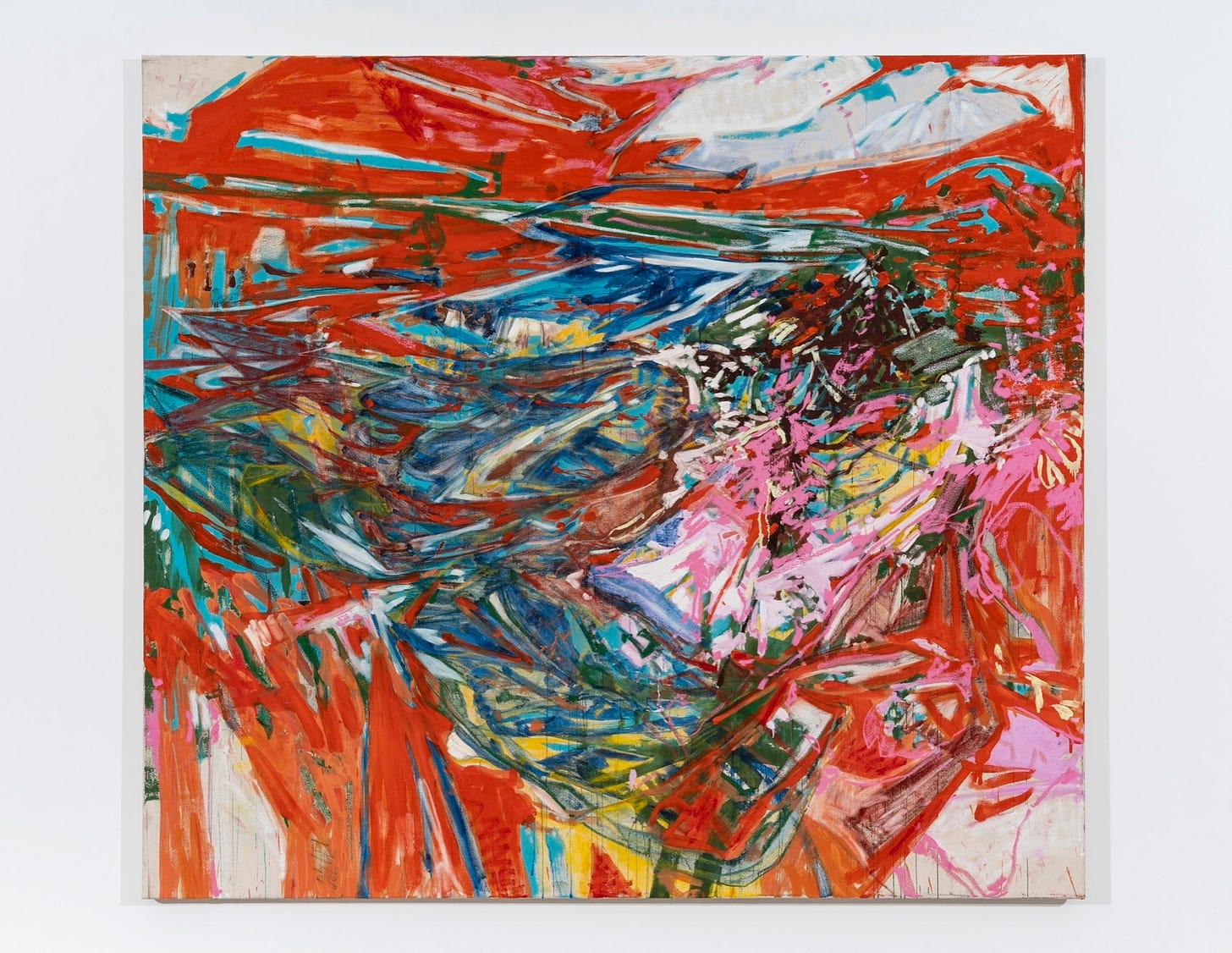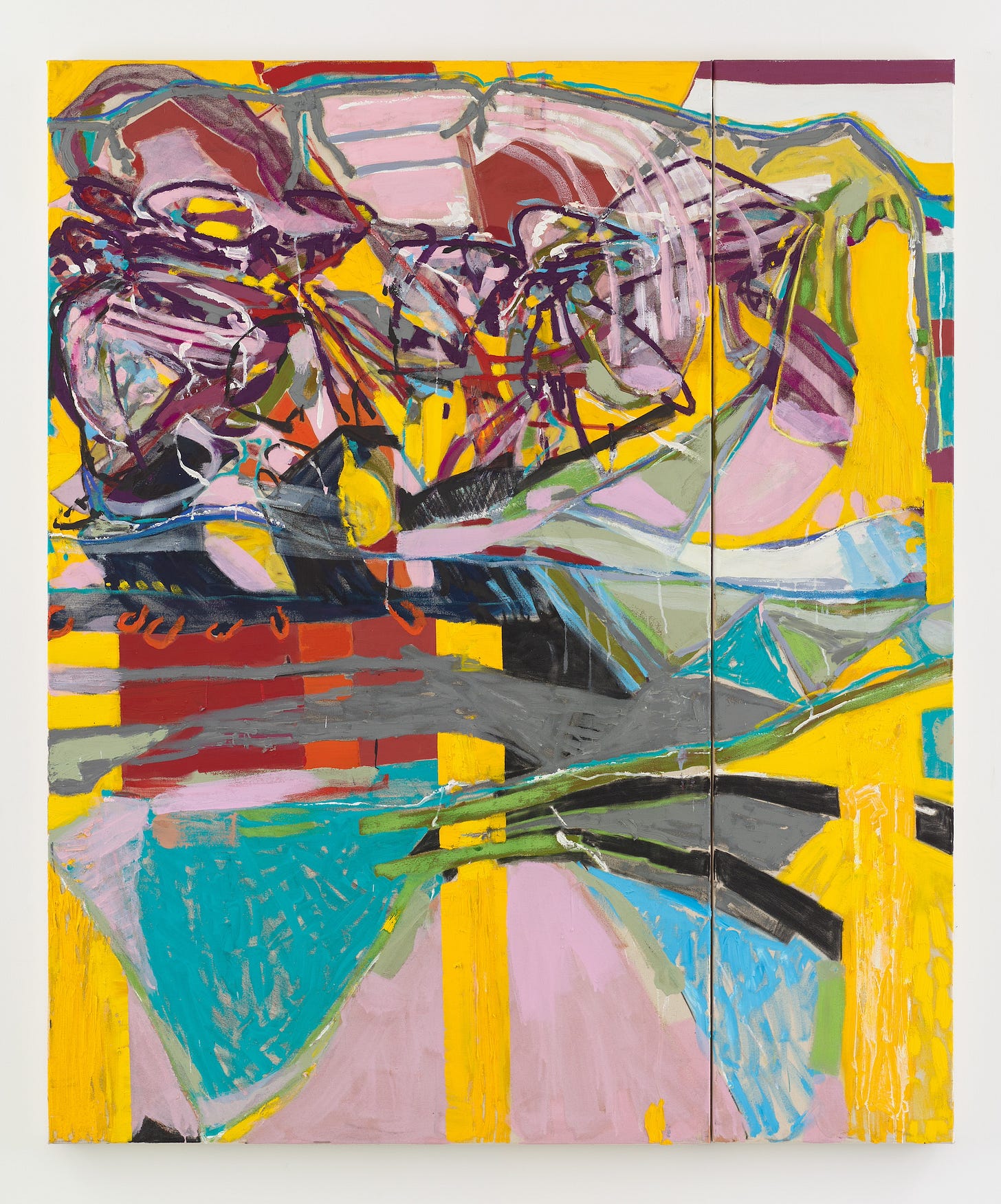The first thing that caught my attention in the paintings of Caroline Jackson was the tension between chaos and order. I noticed a beautiful dance between expressive, painterly gestures and hard, defined lines that possibly hint at a deeper engagement with a subject.
In some paintings, there’s a clear connection to landscape for example. You can follow the outline of natural-looking forms, but only up to a point. And then it shatters into fragments, echoes and overlaps, creating an ambiguous concoction that vibrates with energy. I love the way Caroline seems to draw with the paint, and yet she holds onto her subject loosely, favouring a more intuitive approach that imbues her work with intrigue.
There’s a kind of enigma in her work that keeps me coming back and noticing different elements, my eyes taking a different route through a painting each time. And so there were plenty of things to go into with Caroline, when I emailed the British artist hoping to get a sense of where her extraordinary works come from.
Hey Caroline. Can you tell me about the recent work you showed at Sim Smith? It feels like those pieces were made together and bounce off each other really nicely.
I work on multiple pieces simultaneously in the studio, as I did with these works you mention. I think this creates some kind of synergy and harmony between a body of work. As I move from piece to piece the ideas or way of working often spreads between them. But I don’t see the paintings as being related in any way, nor do I make things to be specifically shown together.
It was also interesting to see some geometric lines in those pieces versus some of your more expressive past works. Is that a recent evolution or just trying new compositional things?
These more geometric lines and shapes are a compositional tool I’ve been using more recently to frame a piece. I think having this contrast between painterly, gestural marks and more architectural solid lines feels more reminiscent of the spaces we occupy in real life.
There’s a definite spirit of landscape within my work. Not depictions of any place in particular but an imagined space. I aim to create places that feel “right” and “balanced” in some way, like they could exist outside of themselves. Maybe these spaces feel familiar, or maybe we just want to explore them.
In ‘Rewild’, shown in Sim Smith’s ‘Shake the cloud from off your brow’, these lines are a way to ground more textural marks. Like a floor and ceiling, with the action of the piece being suspended in-between. Geometric lines can also disrupt or fragment a piece’s ‘flow’ in some way, as with ‘Aerial roots.’ These harsh downwards lines were the last things I added to this piece in a moment of spontaneity. The outcome is a really interesting distortion of form and perspective. Creating a curtain like veil with glimpses of colour and forms peeking through.
I love the dominant blue piece ‘Aerial roots’ that you just mentioned. It looks like you’ve honed in your colour palette in recent works - what can you say about those choices and the recent direction?
Colour is immensely important to my practice, but surprisingly it’s not something I consider as much as texture and form. There are colours that I love and get more obsessed with at certain periods: last year it was an acrylic called ‘green gold’ that I used a lot in ‘Abiogensis.’ More recently, it was this cobalt blue you mentioned in ‘Aerial roots’ - particularly when paired with crimson. But really, my use of colour is intuitive and can sometimes just be a case of trial and error. I can get combinations wrong sometimes and have to paint over and over again.
I do love using muted pastel colours, such as pink, with more intense and vivid colour. I find pastels give a great sense of space, like taking a deep breath, and it’s often very necessary to break up the more chaotic, cerebral mark-making, aiding us in being able to visually digest a work.
In some pieces it looks as if you’re drawing with the paint - it’s gestural and has suggestions of forms in there. Is there reference material for that, is there a plan, or is it all intuitive?
Drawing with paint is something I love to do! Sometimes I start with a drawing in order to break up a blank canvas. It’s almost like putting down the skeleton before adding the flesh and features. I never do preliminary sketches or have a plan in place. I try not to imagine what something may look like at the end. I find holding onto certain visual ideas, or specific areas of a piece that you want to preserve can really inhibit the gestural freedom that is so important to the work. Whenever I’ve tried to make something look a specific way from the start. It’s like trying to shoehorn something into a space where it won’t fit, and it always ends up being painted over.
I’m also not precious about storing my canvas, and it's often scrunched up in a corner somewhere before I stretch it on my paint and charcoal-covered floor. This leaves really interesting, completely random marks on the stretched canvas that can be a wonderful starting point, as it's totally different to what I could create from my own mind. The residue carves out active spaces and prompts possible paths and outcomes.
Can you tell me about the way you make a piece? It looks like there’s a real layering process and I guess that’s complicated by the oil elements which take longer to dry.
I always go into a piece with an open mind, a desire to explore and be playful with shape, colour, and texture. This way of working is surface level, looking at what I’m doing in that precise moment, simply asking: is this interesting to look at?
The other part of my process is a constant choreography of composition as it reveals itself and then dissolves. These dynamic visual rhythms that ebb and flow, that I try to hold onto amidst the playfulness. I always strive to create something that feels balanced in some way, that feels “right,” where even if there’s areas of dissonance, it can be understood.
My process involves various applications: diluting, active gestures, filling in, blasting over, and layering. Marks shift between sharp and defined to soft and smeared. And as oil paint takes ages to dry, I find ‘mess’ and ‘complications’ are a mere consequence of painting and are just as important to my process as my own intention.
Lastly, I was curious how you see your work on a personal level, whether it functions as a kind of therapy, or whether it reflects your personality in any ways?
I think making work is inherently personal on some level, but I don’t see my work as being a very personal thing or therapeutic in any way. I enjoy the process of making: the unknown. The feeling when something comes together is really special and never gets old. It's simply a pleasure to get to create things, even if there’s self-doubt and it's incredibly frustrating!
Follow Caroline on Instagram: @carolinejackson_art
Things on Our Radar This Week
Joe Bradley talking about his fantastic new show at David Zwirner
A great piece about why art galleries are weird about prices, in Plaster
The Best Painting Shows in London This Month
Joe Bradley at David Zwirner (ends 1 August)
Francesca Mollett at Modern Art EC1 (ends 19 July)
Megan Rooney at Thaddaeus Ropac (ends 2 August)
Rudolf Stingel at Gagosian Grosvenor Hill (ends 20 September)
The ‘Elective Affinities’ group show at Vardaxoglou Gallery (ends 5 July)
Thanks for reading, see you next time!
Oliver & Kezia xx
Palette Talk is free and we hope to grow with your support. If you’ve enjoyed reading, drop us a donation via PayPal…




